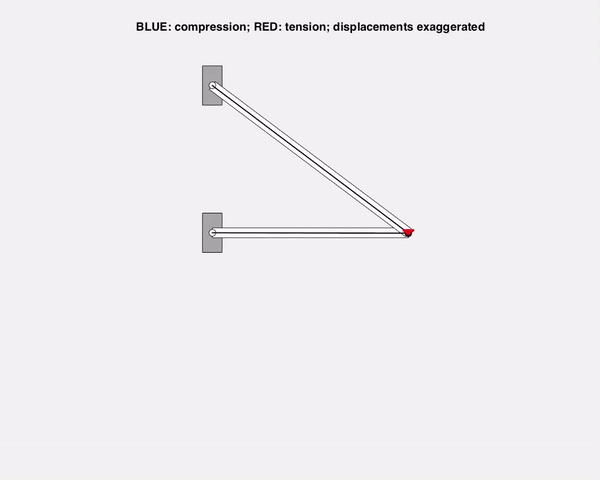Determinate truss

The truss shown above is DETERMINATE.
-
Member loads depend on only equilibrium relations.
-
Material properties, cross-sectional areas and member lengths do not factor in on the member loads.
- It is easy to see from equilibrium analysis (i.e., looking at the FBD of joint C) that member (1) is in compression and member (2) is in tension. The relative magnitudes of the member loads is found from simple trig (also for the FBD of joint C).

Indeterminate truss

The truss shown above is INDETERMINATE.
-
Both equilibrium and deformation must be included in the member load analysis.
- For this indeterminate truss, the compatibility equation for each member elongation is: e = FL/EA = uC cosθ + vC sinθ .
- Here E, A and L for each member will influence the member loads.
- Note from the results below, member(1) carries very little load, although the displacement of C is not insignificant. The shows that the displacement of node C provides considerable rotation for member (1) without much elongation.
- The results for the indeterminate truss are more difficult to interpret than for the determinate truss.

